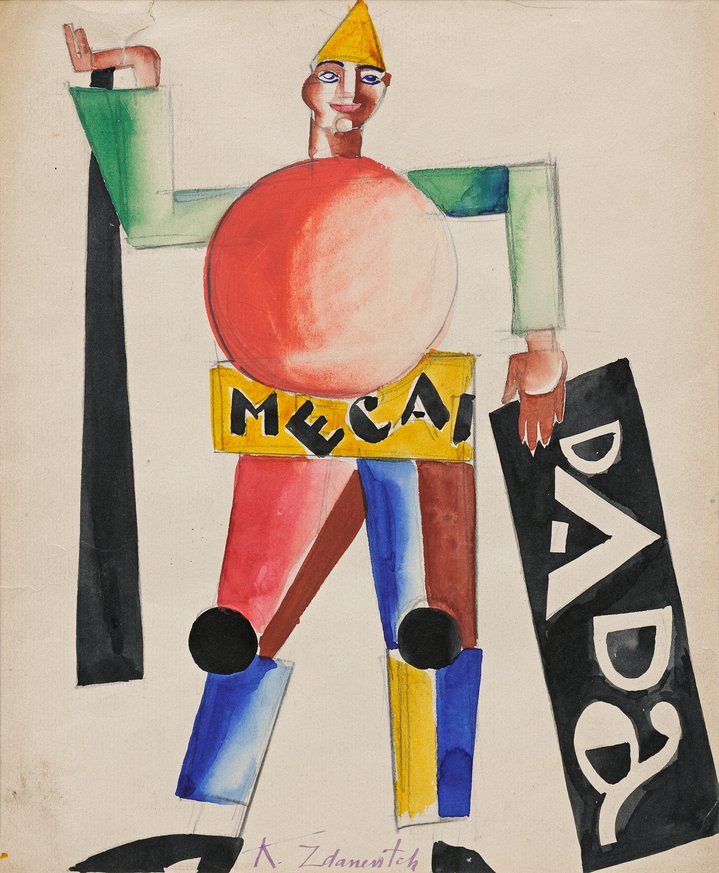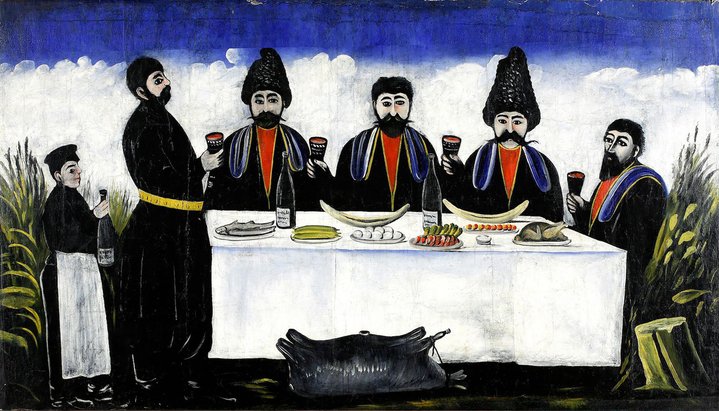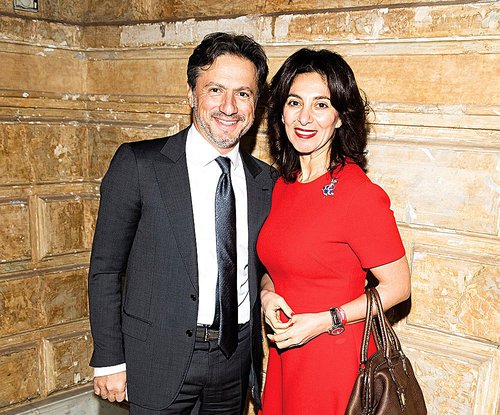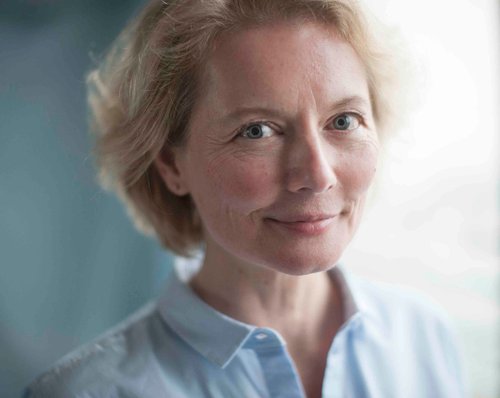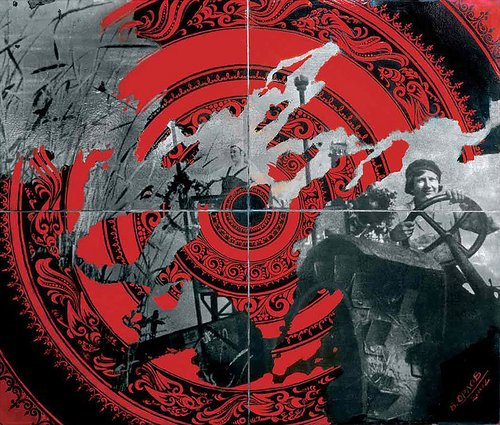Petre Otskheli. Sketch for The Flying Painter. Courtesy of Art Palace of Georgia
Georgian Avant-Garde on Show in Brussels
The international multidisciplinary festival Europalia is holding a series of cultural events in Belgium dedicated to Georgia. ‘The Avant-Garde in Georgia (1900-1936)’ at the Вozar Cultural Centre in the centre of Brussels tells the story of one of the least known chapters in European modernism.
More a theatrical performance than an exhibition, ´The Avant-garde in Georgia (1900–1936)´, curated by Nana Kipiani, Irene Jorjadze and Tea Tabadze includes works by all the heavyweights of the Georgian avant-garde, such as David Kakabadze (1889–1952), Elene Akhvlediani (1901-1975), Niko Pirosmani (1862–1918), Irakli Gamrekeli (1894–1943), Gigo Gabashshvili (1862–1936), Shalva Kikodze (1894-1921) and Lado Gudiashvili (1896–1980). The dash of theatricality which runs through the entire show serves to show us just how close the ties were between the Georgian Avant-Garde artists and the theatre. The exhibition includes maquettes and costume and set designs: Petre Otskheli’s (1907–1937) sketches for ‘Othello’, drawings by David Kakabadze for Levan Gotua’s play ‘The Invisible One’, models by Irakli Gamrekeli for ‘The Robbers’ by Friedrich Schiller, and by Valerian Sidamon-Eristavi (1889-1943) for Lope de Vega’s play ‘The Sheep Well’.
The Golden Age of Georgia lasted from the 11th to the 13th centuries, during the reign of Bagration III, David IV, and Tamara the Great. Until the 18th century, viewed through the mosaic of history, there were only small fragments of what might be seen as Georgian independence. From 1801, Georgian principalities gradually became part of the Russian Empire, culminating in the Bolshevik revolution of 1917. The Russian Empire had run its course, it marked the beginning of the Georgian Democratic Republic which lasted until 1921 when Georgia became a part of the Soviet Union. Georgian independence lasted all of three years.
At the beginning of the 20th century all the artists who would go on to constitute the Georgian avant-garde travelled to Europe to study first hand latest developments. In 1922, after studying at the Tbilisi Art Academy, Elena Akhvlediani left for Italy and then travelled to France to continue her studies at the Académie Colarossi Art School in Paris. Lado Gudiashvili studied at the Tbilisi School of Sculpture and Fine Art from 1910 to 1914, after the first world war he moved to Paris and began his studies there at a private art academy in Paris. David Kakabadze left Georgia for Paris in 1919. By the end of the twenties, they were all returning home. In 1927 Kakabadze returned to the Soviet Georgia, Elene Akhvlediani and Lado Gudiashvili had already returned the year before.
Like the European avant-gardists, the Georgian artists rejected realism and embraced experimentalism in the arts, running through similar movements, including Futurism, Dadaism, Expressionism and Cubism. One particularly Georgian phenomenon was Everythingism, founded by the Zdanevich brothers - Ilya (1894–1975), a writer, and Kirill (1892–1969), a painter - and the writer Mikhail Le Dantu (1891–1917). Art was a process irrespective of any particular time or style, it aspired to notions of universality, it was interdisciplinary and global. It was this trio who discovered Niko Pirosmani to whom Ilya Zdanevich dedicated an article ´A Self-taught Artist´, published in the 'Zakavkazskaia Rech' in 1913.
Once back in Georgia, these artists exploited the local context and formed their own tight knit artist groups. In 1915 a Neo-Symbolist group of poets and novelists called the Blue Horns was founded in Kutaisi. Their publications were often illustrated by Lado Gudiashvili who also painted the walls of Cafe Kamerion, a popular meeting place. The current exhibition in Brussels includes a Dada Manifesto written by poet Titsian Tabidze (1890–1937), a member of the Blue Horns.
In early 1917 the Zdanevich brothers and Aleksei Kruchoynykh (1886–1968) founded the art group Futurist Syndicate which transformed into 41° group the following year. They published books, organized events, discussions and lectures, which mostly took place in ´The Fantastic Tavern´ in Tbilisi. Cafes became the centres of art life in Georgia. In Brussles there are photos of murals in ‘Stepko’s Tavern’ by Lado Gudiashvili and ‘Artist and Muse’ by David Kakabadze created in 1919.
The modernist group Duruji named after the Duruji River in the outskirts of Kvareli city was founded in 1924 by Kote Marjanishvili (1872–1933) and Sandro Akhmeteli (1886–1937). In the same year the radical group H2SO4 was set up by the artist, illustrator and painter Beno Gordeziani (1894–1975) and Irakli Gamrekeli, artist, illustrator and pioneer of the Georgian set design. H2SO4 is sulphuric acid that is colourless and odourless, very caustic and dangerous. It was Stalin's regime that played the role of acid, activating the Great Purge, which took the lives of more than 14,000 Georgians, among them the avant-gardist director Sandro Akhmeteli, writers Titsian Tabidze and Nikolo Mitsishvili (1894–1937) who were executed in NKVD prisons in 1937. Artist David Kakabadze called this time 'the period of silence'. If the exhibition ‘The Avant-Garde in Georgia (1900–1936)’ achieves something it is not only bringing the Georgian avant-garde to audiences in Western Europe, but also in breaking this silence.
Europalia Georgia: The avant-garde in Georgia (1900–1936)
Brussels, Belgium
4 October, 2023 – 14 January, 2024








